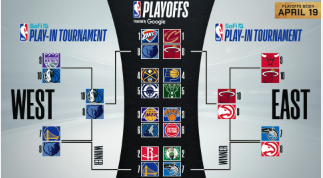Memorial Stadium in Lincoln, Nebraska, saw 92,000 spectators for Omaha vs. Nebraska in Women’s Volleyball. This was the highest number of spectators for a regular-season match for Women’s Volleyball ever. This game overtook the existing record, which was held for 2 years by a match between Wisconsin and Nebraska in 2021 with 18,755 spectators. This is a win for women’s sports across the board, as women’s sports often gain less attendance and attention in comparison to the male games. The 2019 Women’s World Cup had an average viewership of 82.18 million viewers per game, while the 2022 Men’s World Cup had 1.5 billion viewers for its matches. These numbers reflect how much more not only advertising is put into men’s sports but also how much people respond. Seton Hall University ran a survey asking if people would watch more women’s sports if they were readily available. 56% of avid sports fans say they will watch more if it is available more often. If the amount of viewers tuned into female sports increases, the amount of funding that goes into women’s sports would also increase. The NCAA reports that women’s sports get less than one-third percent of the amount of funding that men’s sports get at a collegiate level. This funding doesn’t accurately represent how many women are participating in college sports. In fact, the NCAA reports that women’s participation in sports has gone up from 27.8% in 1982 to 43.9% in 2020. If viewership for women’s sports increases, so would the amount of money allotted to market these sports to the public.
When asking high school athlete Rebekah Tate about the impact of watching a women’s sports match, she responded with an anecdote about her childhood. She reminisced about watching her older sister play basketball and how it impacted her when committing to a sport. She thinks, “It is extremely important… to have young people see themselves represented in sports.”
After following up on that question, we asked how often she sees women’s sports in comparison to men’s. Tate mentions that as a young child, she never saw a women’s sports match ever and never saw any advertising for women’s professional sports. Tate continues by saying, “Never have I ever seen any advertising for women.” She finishes her answer with a light laugh, and we both sit there with the understanding that there are so many people who have never seen advertising for women’s sports.
In the past 20 years, there have been entire news networks devoted to specifically talking about the advancement of women’s sports, dedicating space to speak about the importance of viewing women’s sports as often as we do men’s. “Just Women’s Sports” is an organization using their platform to emphasize the stories that are coming out of women’s sports daily.























